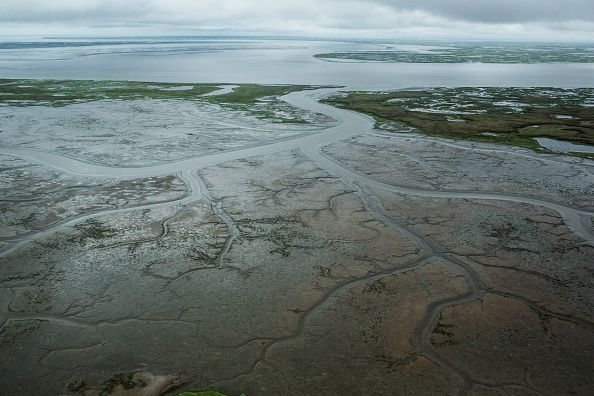
In what they describe as a "game-changing discovery," scientists have measured the pool of mercury that lies underneath the permafrost layer in Alaska and found it contains nearly twice the concentration of the dangerous substance as all the other mercury in the ocean, the atmosphere and the rest of the world's soil combined.
That makes it the single largest mercury reservoir—measuring at around 32 million gallons—on the planet, according to a press release from the American Geophysical Union (AGU). Scientists note it's comparable to 50 Olympic-size swimming pools, according to The Washington Post. A paper describing the research was published in the scientific journal Geophysical Research Letters.
Ooof—scientists have just discovered that permafrost is absolutely loaded with mercury. And, of course, now it’s thawing out… https://t.co/dPd2SQnJqM pic.twitter.com/rI31nKlWEy
— Carl Zimmer (@carlzimmer) February 5, 2018
"There's a significant social and human health aspect to this study," Steve Sebestyen, a research hydrologist at the USDA Forest Service in Grand Rapids, Minnesota, who was not involved with the research, told AGU. "The consequences of this mercury being released into the environment are potentially huge because mercury has health effects on organisms and can travel up the food chain, adversely affecting native and other communities."
When the permafrost melts, the mercury will infiltrate our waterways, interact with microorganisms and become methylmercury—a dangerous neurotoxin that can cause everything from motor impairment to birth defects, according to the AGU press release.
"There would be no environmental problem if everything remained frozen, but we know the Earth is getting warmer," lead author Paul Schuster, a hydrologist at the U.S. Geological Survey in Boulder, Colorado, said in the AGU press release. "Although measurement of the rate of permafrost thaw was not part of this study, the thawing permafrost provides a potential for mercury to be released—that's just physics."
The Arctic's frozen permafrost holds some 15 million gallons of mercury.
— InsideClimate News (@insideclimate) February 7, 2018
As the permafrost melts, the powerful neurotoxin will be released into the environment. https://t.co/eR4O5ddAa3
Permafrost is soil that has remained frozen for at least two years, according to Live Science. This permafrost, though, has kept the mercury pool trapped since the last Ice Age. Before this study was conducted, the general assumption was that this region of permafrost contained very little mercury, and potentially none at all, according to National Geographic.
"[Twenty-four] percent of all the soil above the equator is permafrost, and it has this huge pool of locked-up mercury," Schuster continued in the press release. "What happens if the permafrost thaws? How far will the mercury travel up the food chain? These are big-picture questions that we need to answer."
Uncommon Knowledge
Newsweek is committed to challenging conventional wisdom and finding connections in the search for common ground.
Newsweek is committed to challenging conventional wisdom and finding connections in the search for common ground.
About the writer
Kastalia Medrano is a Manhattan-based journalist whose writing has appeared at outlets like Pacific Standard, VICE, National Geographic, the Paris Review Daily, ... Read more
To read how Newsweek uses AI as a newsroom tool, Click here.








